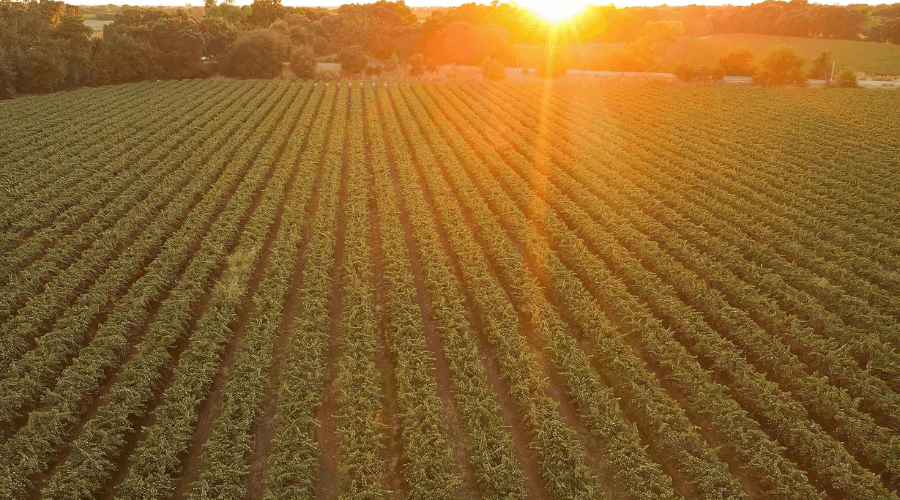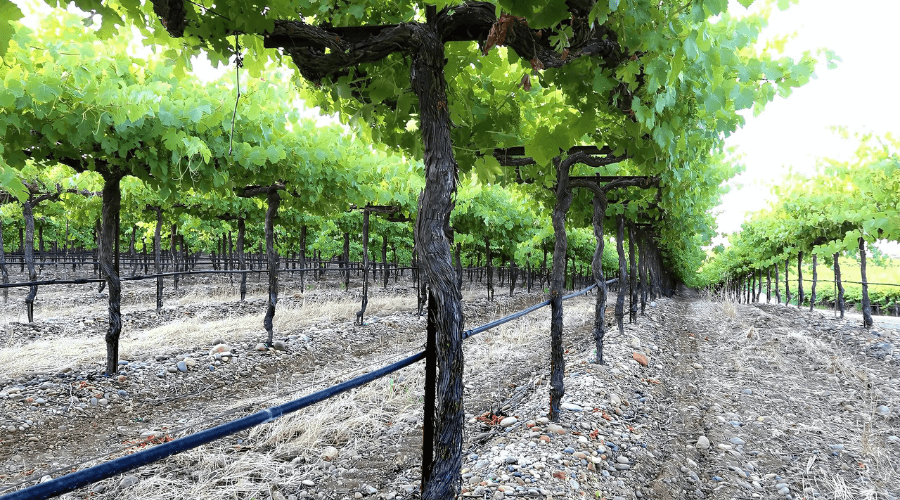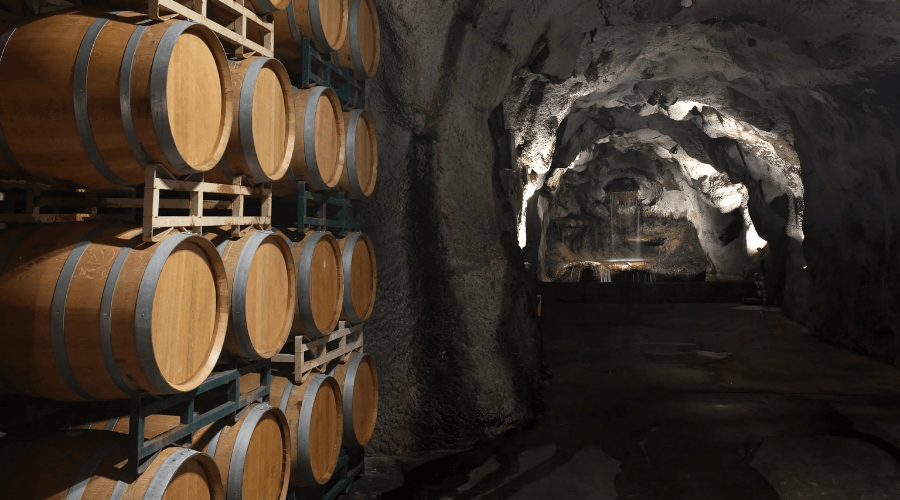Blog
Insights
The Business of Bulk Wine: Insights from Ironstone Vineyards

Kurt Kautz on managing supply, pricing, and quality in bulk wine
The bulk wine market is in flux. With shifting consumer preferences, pricing volatility, and unpredictable supply and demand, producers must remain agile in their sourcing and sales strategies. For Ironstone Vineyards, a family-run operation deeply rooted in Lodi, California, these changes present both challenges and opportunities.
Kurt Kautz, part of the fourth generation at Kautz Family Vineyards, provides insight into how Ironstone is adapting. While many wineries look outward for bulk wine sourcing, Ironstone remains focused on producing its own, ensuring control over quality and consistency. Their strategy involves balancing short-term market realities with long-term vineyard investments, making crucial decisions each season on whether to sell grapes or convert them into bulk wine.
In this conversation, Kautz shares how Ironstone navigates the complexities of the bulk wine sector—from procurement and pricing strategies to the evolving role of bulk wine in the industry.
The bulk wine market is facing major shifts in supply, demand, and pricing due to factors like oversupply, changing consumer preferences, and economic pressures. How is Kautz Family Vineyards adapting its procurement strategy to these fluctuations?
Our procurement strategy is based on bulk wines that we have precontracted. As a majority of the wines we produce come from our own vineyards, we have to make the call each season if we are better off to sell the grapes for the spot market price or crush them for Bulk wine. Our contracts with outside growers are annual due to the unknown market conditions and changing consumer preferences. Sometimes it is better to sell the grapes cheap than to make bulk wine and sell it cheap.

Image: Frazier ranch estate, California - Ironstone Vineyards.
Have recent market conditions led you to explore new sourcing regions or diversify suppliers to mitigate risks like climate change, geopolitical issues, or supply chain disruptions? If so, which regions are emerging as viable alternatives?
Our bulk wine is mainly sourced from the Lodi region and our supply contracts usually specify Lodi Appellation, so we do not source outside Lodi, unless a customer has a special request. Supply Chain disruptions seem to have worked themselves out at the moment. Not too much we can do about climate change as vineyards are a 25-year investment. Sometimes we harvest them earlier than normal and sometimes later. Actually, there really isn’t a “Normal” anymore.
Given pricing volatility, is Ironstone favoring long-term contracts for stability or leveraging short-term spot market opportunities? How do you balance cost control with ensuring quality and availability?
We are purchasing grapes on a short-term, spot market basis when we need to. This is much more for an unknown market in the future than it is for lower pricing. Even if the price of grapes is very low, it doesn’t do you any good if you can't sell the wine. Regarding cost control, we do not reduce the inputs necessary to make the best grapes and wine possible. In a long market, only the best quality will sell, so it doesn’t help to produce them cheaply if you can't sell them. So our cost control is targeted at labor, power, and water efficiencies.

Image: Kautz Farms vineyard in Lodi's river-rock, hilly Sloughhouse AVA.
What are the most critical factors when selecting bulk wine suppliers—price, quality, reliability, sustainability? How do you ensure consistency in quality across different suppliers and vintages?
We do not buy bulk wine from others, we produce all of our own wine for sale and internal use. We grow our grapes geared towards the highest quality, as the best grapes make the best wines. The challenge can be vintage variability due to the weather, etc
How do you integrate bulk-sourced wines into your portfolio while maintaining house style? Are there specific quality control processes or technologies that help preserve consistency?
To maintain consistency, we process about 20 varieties of grapes, which gives us huge blending options to make each vintage similar to the last and the best quality. It also allows us to provide our customers with many choices and blending components. We can add oak aging and micro-Ox to the wines if desired.

Image: The naturally cooled caverns hold Ironstone's Reserve wines in small French and American oak barrels. Source: Ironstone Vineyards.
Are you seeing a shift in preferred shipping formats (ISO tanks, flexitanks, etc.) for bulk wine? What factors determine the best approach for Ironstone’s supply chain?
The shipping containers are chosen by the customer based on their internal needs and preferences. We do not buy any bulk wine from others.
Have you noticed any shifts in the profile of key bulk wine buyers and sellers? Are certain regions or producers becoming more competitive in the market?
The main shift in bulk wine buyers and sellers, in my opinion, is that buyers are preferring to stay on the short side of inventory needs. Sellers have to make the choices of moving wine for cash flow reasons, or space reasons verse the highest price they feel the wine should sell for.
[[relatedPurchasesItems-62]]
Looking ahead, how do you see Kautz Family Vineyards’ bulk wine procurement strategy evolving in the next five years? Are there innovations or structural changes you foresee in the way bulk wine is bought and sold?
I actually think more wine buyers will move towards the bulk wine market verse the grape market. With bulk wine, the buyer gets to sample the product before they buy it and the buyer has more flexibility as to the quantity they buy, and they have more options to blend wines to meet their needs, without having to invest in equipment of their own. Using the bulk wine market for a wineries supply lets them invest more in marketing their brands.

Image: Bear Creek Winery.
Conclusion:
As the bulk wine market continues to evolve, flexibility and foresight remain key. Ironstone Vineyards’ approach—anchored in vineyard ownership, strategic decision-making, and a commitment to quality—demonstrates how producers can adapt to market realities without compromising their core values. While some wineries may rely on long-term contracts or external suppliers, Ironstone’s control over its fruit gives it a unique advantage in an unpredictable landscape.
Looking ahead, Kautz foresees a growing reliance on bulk wine among buyers who value flexibility and cost efficiency. For Ironstone, that means continuing to refine its production strategies while staying attuned to market shifts. In an industry where change is the only constant, their ability to balance pragmatism with quality will be critical in shaping the next chapter of their bulk wine business.
In conversation with Malvika Patel, Editor and VP, Beverage Trade Network
Also Read:
Beyond the Label: How Mendocino’s Bulk Wines Shape California’s Finest Bottles
Challenges and Opportunities for Wine Producers in California: A Long-Term Outlook
The Future of Bulk Wine: Sustainability, Market Trends and Industry Challenges
If you're a bulk wine or bulk spirits supplier, contract bottler, or private label producer aiming to connect with serious trade buyers, IBWSS San Francisco is the event you can't afford to miss. Get a quotation or Book a exhibitor table.

